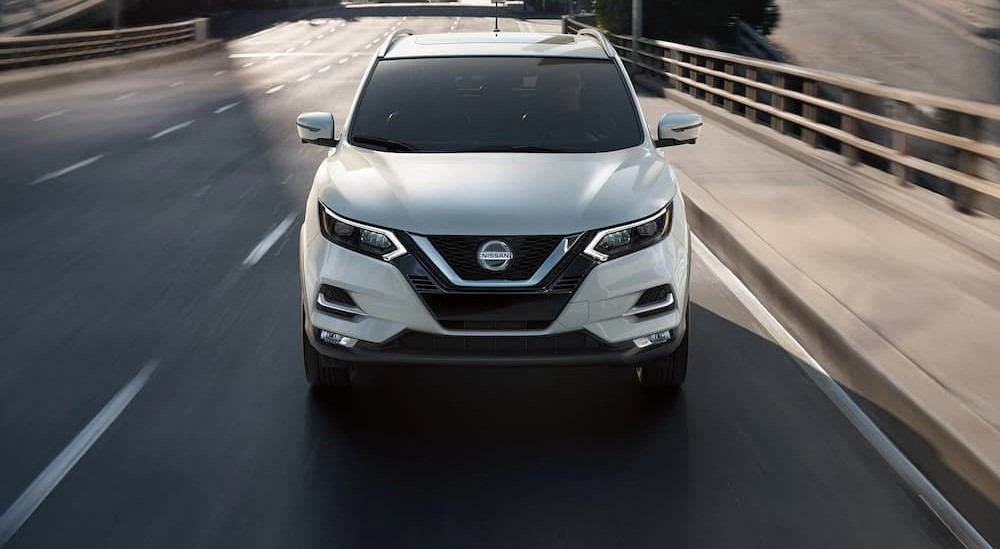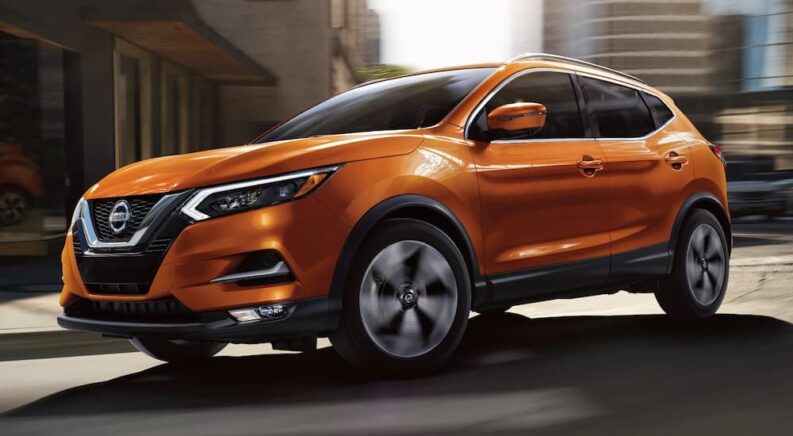Every major automaker has something noteworthy about what they provide with their vehicles that they want to stand out—from design cues and interior technology to performance capabilities or off-road features. There is always something that sets a company’s series of models apart from the competition. In Nissan’s case, it’s their VC-Turbo engines. You may have heard about them and wondered what they are or why they have developed such an enthusiastic fan base. Whether you’re interested in buying a new or used vehicle from a Nissan dealer or online seller, it’s a topic that is likely to come up.
What Is The VC-Turbo Engine?
Before getting into the nitty gritty of what makes the VC-Turbo so special, it’s a good idea to have a general understanding of what this engine actually is. VC-Turbo stands for a variable compression turbocharged engine, and it’s more of an integrated system than a stand-alone engine. This is because the VC-Turbo engine is available in different displacements–how much air goes through the engine—for Nissan’s various nameplates.
Nissan has two VC-Turbo engines—a 1.5L VC-Turbo inline three-cylinder and a 2.0-L VC-Turbo inline four-cylinder. The smaller 1.5-L three-cylinder produces 201 hp and 225 lb-ft of torque. Like many of Nissan’s vehicles, it is paired with a continuously variable transmission (CVT). It powered the 2022 model year of the Nissan Rogue, which gets 30 MPG in the city and up to 37 MPG on the highway using the VC-Turbo.
The 2.0L VC-Turbo puts out 248 hp at 273 lb-ft of torque and is paired with a CVT. The beefier 2.0-L inline four-cylinder is attached to Nissan’s popular midsize sedan, the 2022 Altima, which has an EPA mileage rating of 28 MPG in the city and 37 MPG on the highway in front-wheel drive. That’s remarkable for a midsize sedan.

What Makes The VC-Turbo Special?
When it comes to the functionality of the VC-Turbo, what makes it stand out? Well, it’s in the name: the variable compression turbocharger features variable compression. What that means is that it’s designed to vary its compression rate while you drive, giving you the opportunity to save fuel when you don’t need to whirl up the turbos for extra performance. This is made possible using a multi-link compression ratio swivel called a control link, which is attached to a lower-link where the pistons are attached. The swivel is moved up or down by a variable compression rate actuator. These multiple links make it possible for the pistons to draw in different amounts of air, depending on the engine’s needs at a given time.
To further explain, the actuator dynamically moving the swivel can change the compression rate of the pistons from a high compression rate of 14:1 down to a lower compression rate of 8:1. The variable change in the compression rate alters the power output from the engine based on how much work is being done in the combustion chamber. This is accomplished without actually changing the way a piston strikes since the upper link of the piston doesn’t change in stroke motion. Instead, the control link changing the angle of the lower link on the multi-link system can raise or lower the piston’s position within the chamber. It is a case of grace versus strength; by making each piston strike more efficient, the engine doesn’t need to constantly depend on raw power.
So what does all of this mean, and how does it apply to how you drive? Well, a low compression rate means you’re getting more power out of the VC-Turbo powertrain because the piston is raised higher in the chamber and is firing more quickly. This creates more rotation on the crankshaft and puts more torque through the driveline, which results in more power for the wheels. This means you get the most out of the engine’s power without tweaking the airflow or piston strokes manually.
A higher compression ratio means that each stroke on a piston in the chamber is longer and thus fires far less in the combustion chamber. This is great for conserving fuel and getting more range from a vehicle. So, if you’re a fuel-conscious driver driving something like the Nissan Rogue or a Nissan Altima for commuting, making use of the high-compression capabilities enables you to get a lot of range out of the Altima without asking the engine to exert itself too much.
In short, the VC-Turbo is designed to give speed enthusiasts something to chew on with its turbocharged low-compression capabilities. It also gives commuters looking to save at the pump plenty to enjoy as the high compression enables you to save fuel. And a driver literally doesn’t have to do anything mechanical to change between these modes. The beauty of the system is that since the engine uses the variable compression actuator to shift between compression ratios, it does all of the work for you.
How Does The Turbocharger Work With A VC-Turbo Engine?
The mechanically savvy might be scratching their heads about how the VC-Turbo works, given that turbochargers would essentially work against the idea of having a high-compression engine. It might result in a blowout. How does Nissan have a turbocharged variable compression engine that uses both high compression and low compression at the same time? It’s a bit of wizardry that Nissan has managed to master for their VC-Turbo uniquely.
According to Nissan, their VC-Turbo engine uses a newly developed high-efficiency, wide-range turbocharger, and electric waste gate that allows precise boost pressure control with minimal turbo lag to generate powerful on-demand output. Under low load, the electric VTC (Valve Timing Control) continuously adjusts valve timing to reduce pumping loss. What this means to the layman is that not only is the VC-Turbo engine smarter than a given driver, but the individual components of the engine are, too.
As a result, you get a carefully balanced system to get the power when you need it, but it never over-stresses the system when you don’t need it. It’s a genuinely artful bit of engineering from the minds at Nissan to get a lot of longevity out of the engine.

When Did Nissan Make The VC-Turbo Available?
The VC-Turbo originally began the research and development process in 1998. It took a lot of trial and error to finally get a working model available for the Nissan line of vehicles and those that share the powertrain as part of the Infiniti line. The first actual deployment of the VC-Turbo came several years after debuting it at a motor show in 2016, with the 2019 model year version of the Nissan Altima and, later, the 2022 model year of the Nissan Rogue.
Nissan had been on a mission to revolutionize the combustion-based power plant market, and the new VC-Turbo was welcomed by enthusiasts who had been watching their efforts. The Nissan Rogue made the Ward’s Top 10 list for the best engines and propulsion systems for 2022. Nissan definitely managed to get something out of more than 20 years of development for their patented technology.
What Cars Have VC-Turbo Engines?
If you want to drive with a VC-Turbo, you should probably look toward the Nissan Rogue and Altima SR series. If you are open to the idea of a pre-owned Nissan, both the Rogue and Altima have had VC-Turbo engines since 2019.

